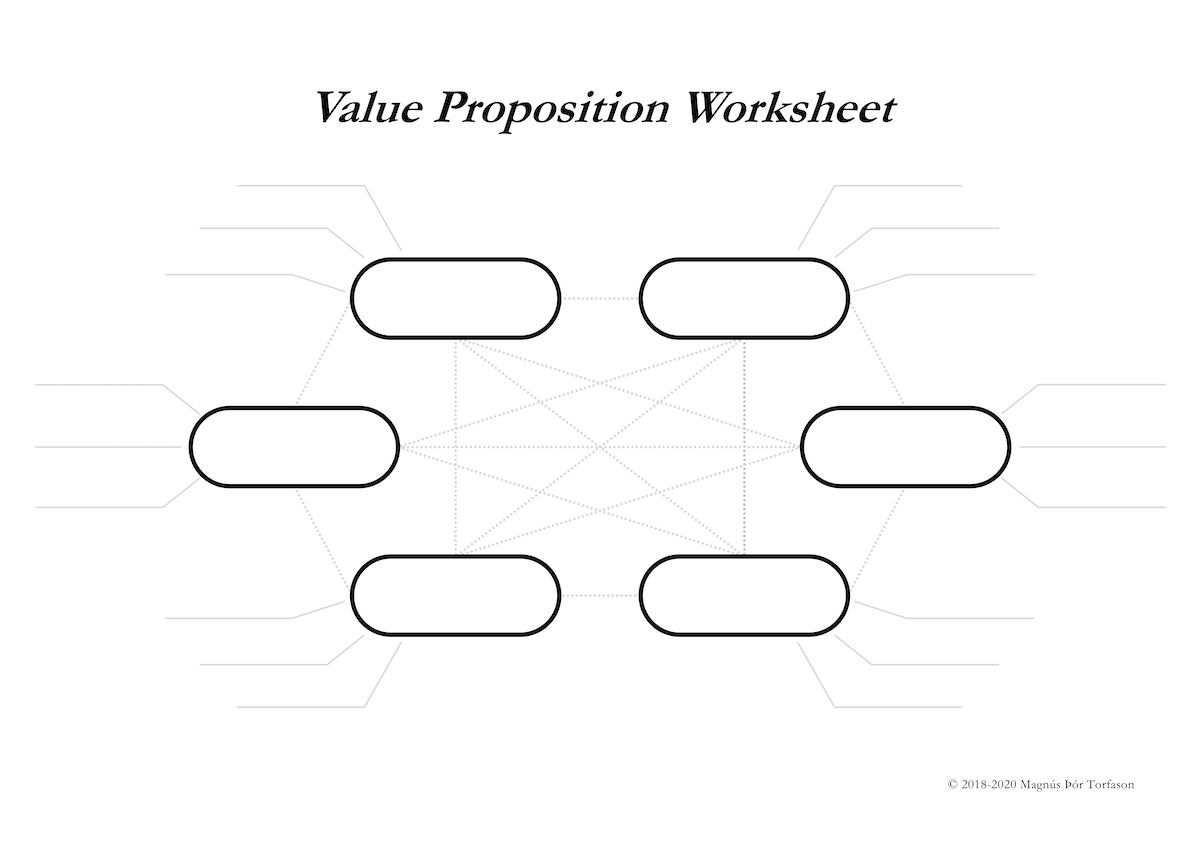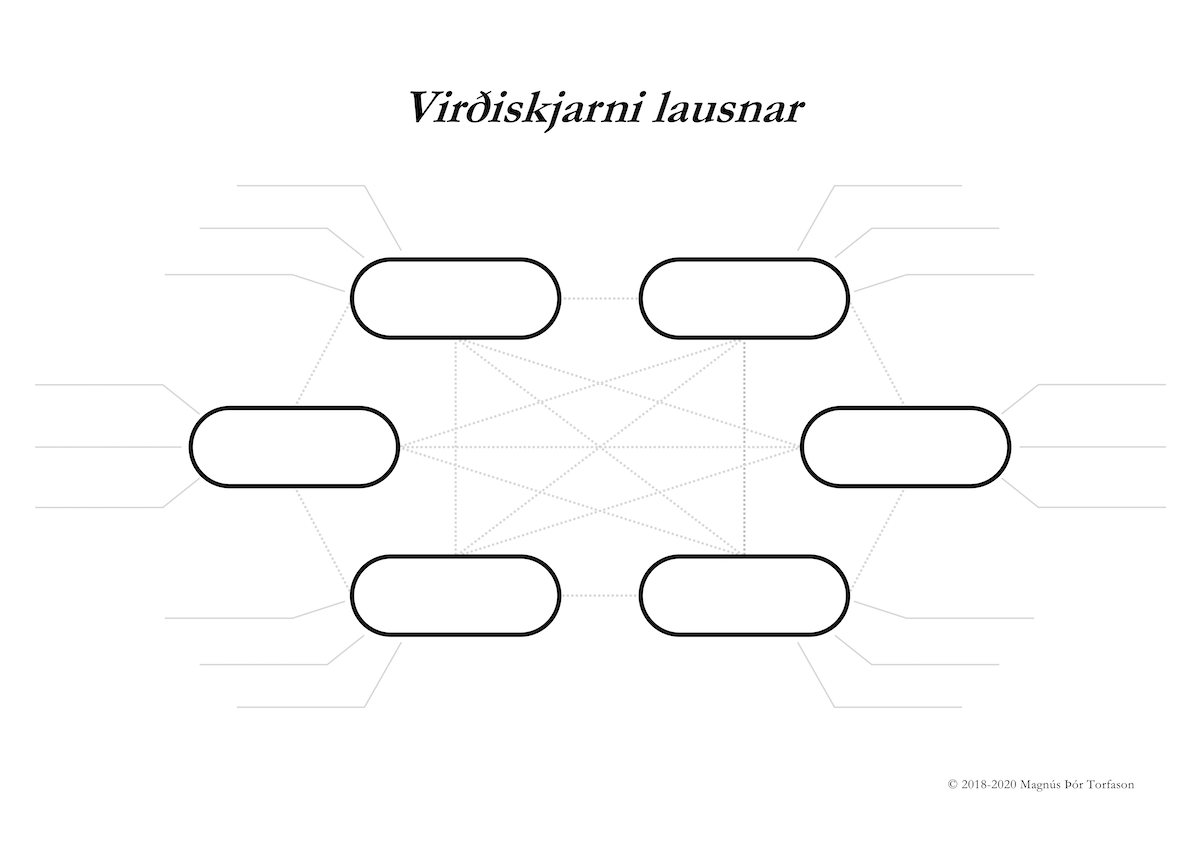When working with startups on defining their solution offering, I often find it helpful to use a simple worksheet that I have developed for visualizing value propositions. If you need a copy of the worksheet, you can download it here, in English (left/top) or Icelandic (right/bottom):
If you prefer, you can get an editable Google Slides version here.
Why the value proposition worksheet?
Of course, there are countless worksheets and canvases out there, so why come up with a new one? In my experience, the value of this particular format is that it allows a clear emphasis on the distinctions between the job to be done by a solution and the features needed to perform the job. The worksheet features three main components:
- The six ovals are intended for the key jobs to be done by the solution – the way in which the solution provides value to the customer. Six is no magic number, but this provides a level of granularity that feels about right for this approach. Sometimes all the jobs provide value to the same type of customer, but sometimes the solution does different jobs for different people. A few examples of this might be to help users “make restaurant reservations faster”, “compose better music”, or “support elderly relatives in day-to-day tasks”. It can be helpful to group related jobs, in particular jobs that relate to the same customer segment.
- The dotted lines between ovals can be traced to further emphasize visually jobs that relate to each others. This helps founders think about whether their solution is doing an integrated set of jobs or several unconnected ones (which should prompt a discussion of whether the startup really should be focusing on trying to do all of those jobs for the customer). When this is done in a group of startups working on the worksheet at the same time, it also highlights the different ways in which relationships between jobs are structured – some founders end up with thick lines all over the hexagon, but others end up with clearly separated clusters of jobs.
- The lines around the job ovals can be used to list the different features that the solution must have in order for it to do its jobs. This could include “integrated geofencing”, “pre-recorded drum tracks”, or “secure chat functionality”. It is worth emphasizing that features are not desireable in and of themselves. A feature should be included on the worksheet only if it is absolutely neccessary to do an important job (and a significant feature that is not worth including in the worksheet is probably a feature that should not be implemented).
When I go though this worksheet with start-ups, I begin with a coverage of the general idea behind the “value proposition” followed by a discussion of how to think about “jobs to be done”. In the discussion of jobs-to-be-done, I build on the approach that Clayton Christensen and co-authors have described in HBR and elsewhere. Those topics provide enough of a foundation for utilizing the work-sheet, so a discussion of the mechanics of the worksheet only takes a couple of minutes or so.
I have gone through this worksheet with a number of startups by now, and in my experience the most important lesson is the way in which this arrangement helps make clear that it’s the job that is at the heart of the value proposition. Doing jobs is what creates value for the customer. Features are unavoidable for the solution to do its jobs, but features are also what creates cost for the startup. It goes without saying that an unimportant job, that requires many big features, may well be a job that is not worth doing.
For those who like to think visually, the fact that the result visually resembles a snow flake also helpfully evokes two ideas. First, that a startup’s value proposition should be unique and distinct from any other value proposition. Second, that the value proposition can be a fragile thing and requires constant attention if it is not to be undermined by competition or other circumstances.
A single session working on this worksheet is helpful for organizing the value proposition about clusters of jobs, and has several times led startups to realize that particular features of the solution might not be worth the effort. The worksheet makes no explicit attempt to capture the evolution of the solution after such a session, but just as with other worksheets (think BMC), this can be captured by maintaining ongoing versions of the worksheet over time.
If you find the worksheet helpful, I’d love to hear about it.

